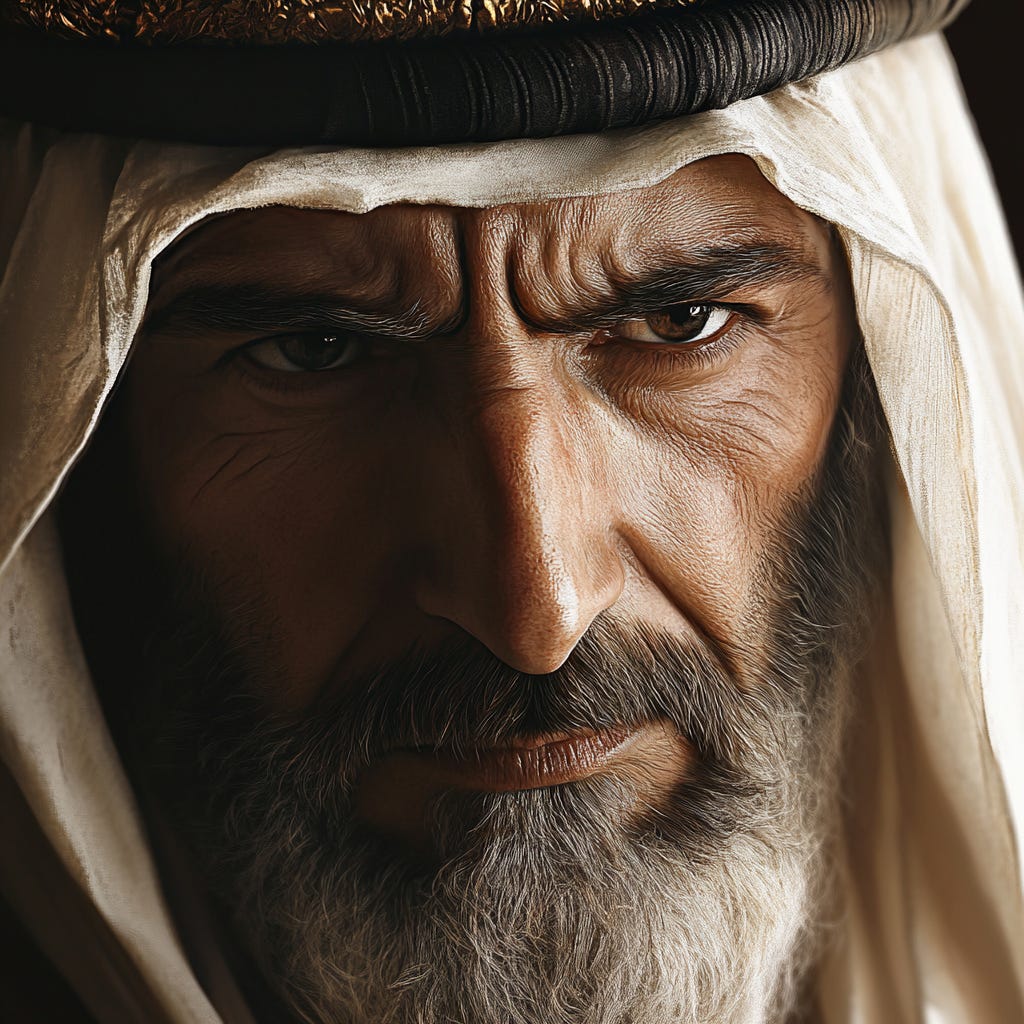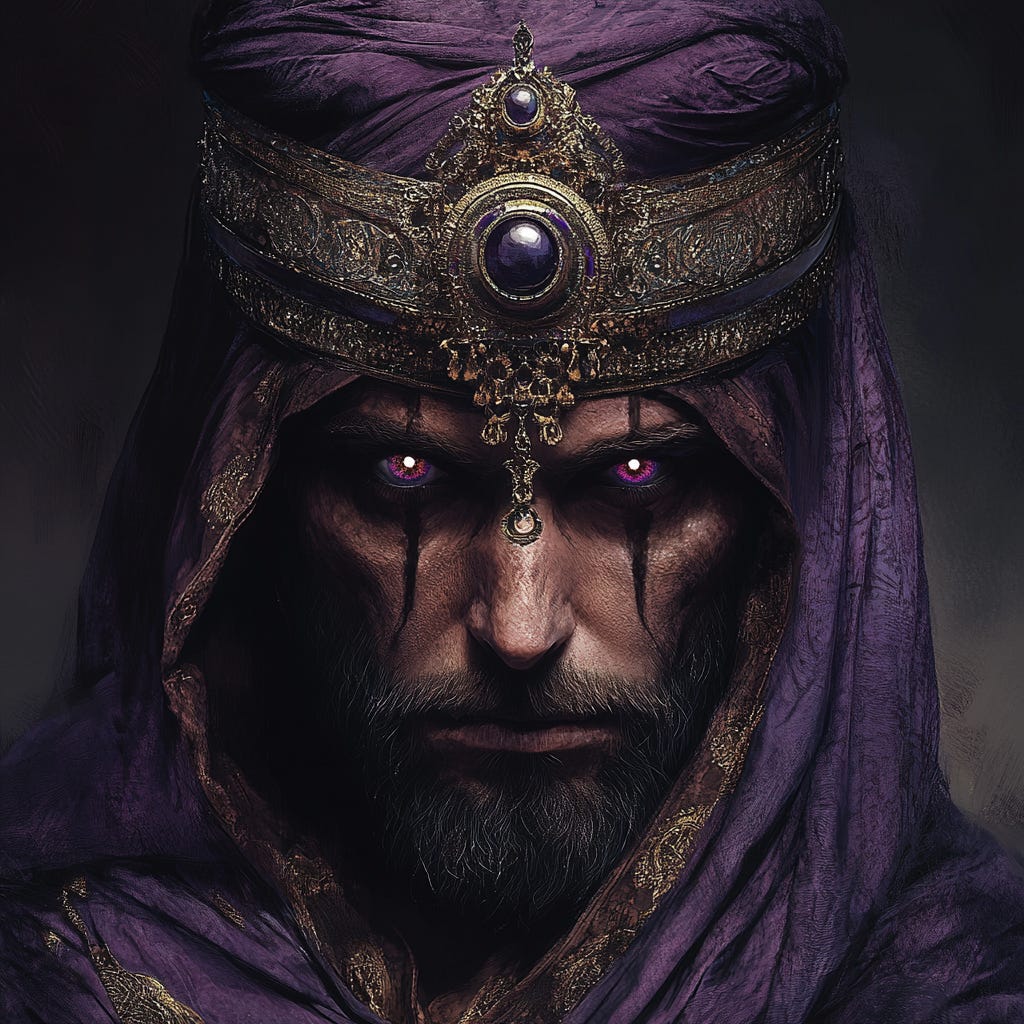The Two Blood-Smeared Ones
Long before the advent of Islam, King Mundhir III ruled over the Banu Lakhm from the ancient Mesopotamian city of al-Hirah. His two dearest companions were Khalid ibn al-Mudallil and ‘Amr ibn Mas’ud. One night, as the three caroused in the castle’s opulent triclinium, Khalid remarked that, like every Lakhmid king preceding him, Mundhir would eventually be wrapped in a death shroud and buried beneath the desert sands. With a laugh, ‘Amr remarked that not all bodies beneath the desert were dead. Outraged by these reminders of his mortality, and in a drunken fit, King Mundhir ordered both men wound up in white shrouds and buried alive outside the castle.
The next day, after recovering from his drunkenness, Mundhir inquired into the whereabouts of his friends. When he was learned of what he had done, he was not only ashamed but afraid that a curse might befall him. He commanded that two obelisks be raised over his companions’ graves; and decreed that he would arbitrarily appoint one day each year to be The Day of Good. And on this day, the first person to cross his path—no matter how young or old, no matter how rich or poor—would be presented with a hundred black camels.
But after each Day of Good, there would be a Day of Evil. And on this day, whomsoever King Mundhir’s eyes fell upon first would be presented with the severed head of a black leopard from the mountains of Oman and immediately butchered. The victim’s blood would be smeared on the two obelisks in order to appease the darksome Furies of Arabia who had been awakened by Mundhir’s unjust and inhospitable act toward his companions.
The obelisks were called al-Ghariyyan, which means The Two Blood-Smeared Ones. It was said that the poet ‘Abid ibn al-‘Abras fell victim to this strange rite, which persisted for many years until Hanzalah of the Banu Tayyi’—a tribe known for its justice and hospitality—became the first man Mundhir encountered on the Day of Evil.
Hanzalah, who was a powerful wizard, asked Mundhir to grant him a grace period of a few months so that he could put his affairs in order before he died. Mundhir agreed so long as Hanzalah could find a surety. The wizard chose his apprentice, Sharik ibn ‘Amr, and swore to the boy that he would return to al-Hirah before the grace period had ended. But on the appointed day, Hanzalah was nowhere to be seen. Sharik was dragged from the dungeon. The executioner whetted his sword, and the mourning-women chanted their dirges before the rising winds.
But then, in the distance, a somber procession made its way toward the assembly from the marshes of al-‘Iraq. It was a delegation from the tribe of the Banu Tayyi’, bearing among them the body of the wizard Hanzalah wrapped in a burial shroud. The old sheikh’s family wept for their lost patriarch; and the ululations of the womenfolk pierced the turbid air.
So moved by the spectacle was the Lakhmid king that he ordered that Sharik be released and abolished forthwith the grisly custom that he himself had instituted. Hanzalah was buried at sundown. But what none knew was that the withered corpse lowered into the ground contained trapped within it the soul of King Mundhir III, who would remain forever awake, peering up into the unremitting darkness covering his eyes.
The man who had been King Mundhir smiled down at the corpse, regarding it through pupils and irises suffused by a lavender light. The Furies of Arabia had triumphed in the end. Mundhir’s boon companions, Khalid ibn al-Mudallil and ‘Amr ibn Mas’ud, were very much alive in that fleshy vessel that had once housed the Lakhmid king. They sat on couches of gold in a magical triclinium of the spirit, as honored guests of the hospitable wizard Hanzalah of Tayyi’.
This is a reimagining of an ancient folktale about King Mundhir III (d. 554) of the Banu Lakhm. The story appears in a different form in a medieval collection of Arabic poems called the Kitab al-Aghani (“The Book of Songs”) by the Persian encyclopedist and historian, Abu al-Faraj al-Isfahani (d.967).









This was such a cool story. Can I use it in my Shield of Locksley story? I can see Palomides telling a story like this. It wouldn't be the same, of course, but it's just so cool.
Loving the images as well, especially the first and last one.